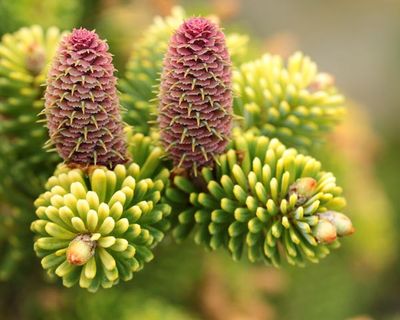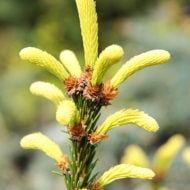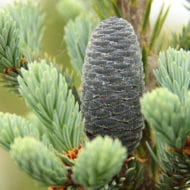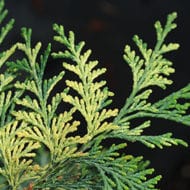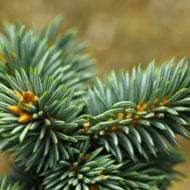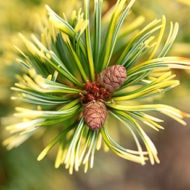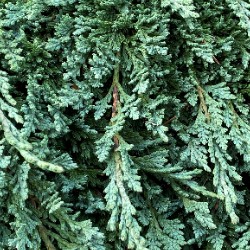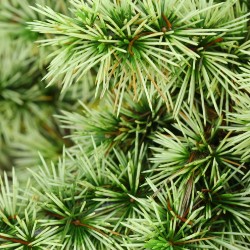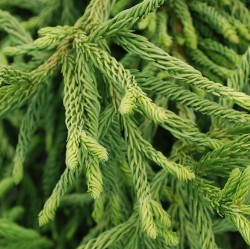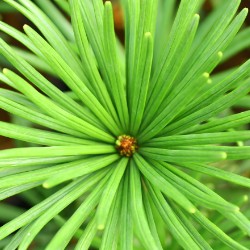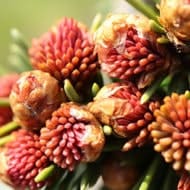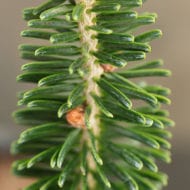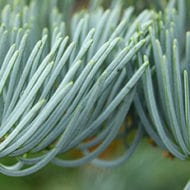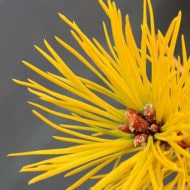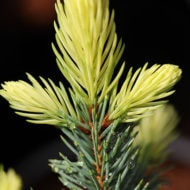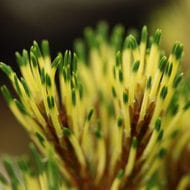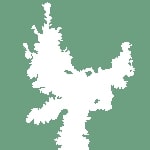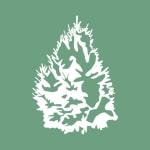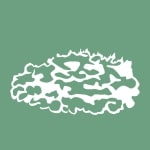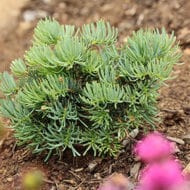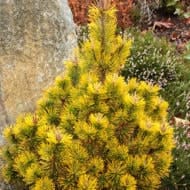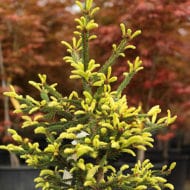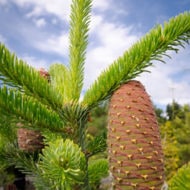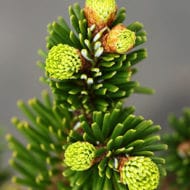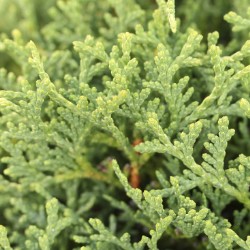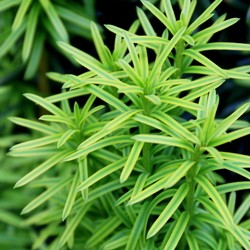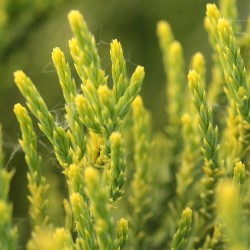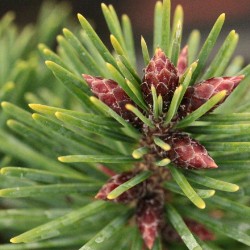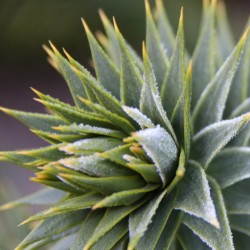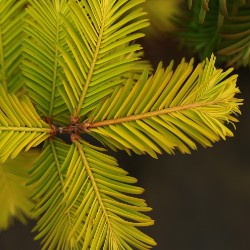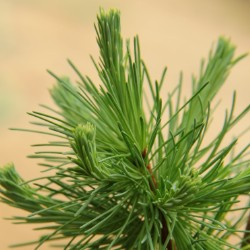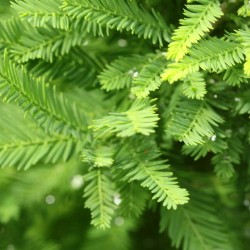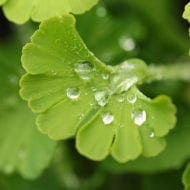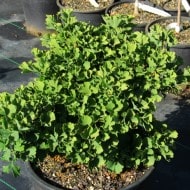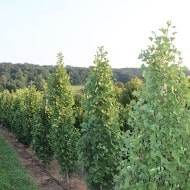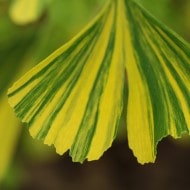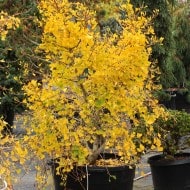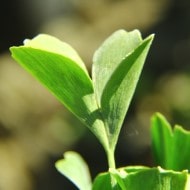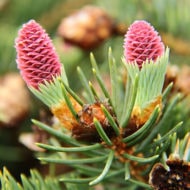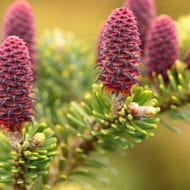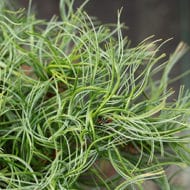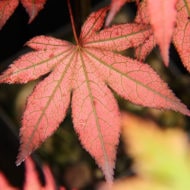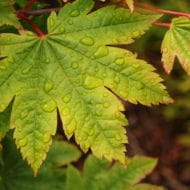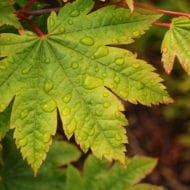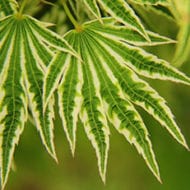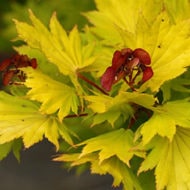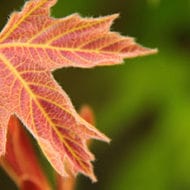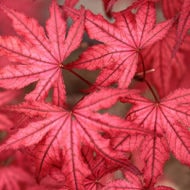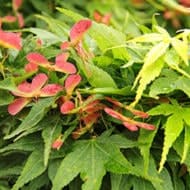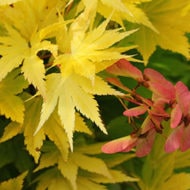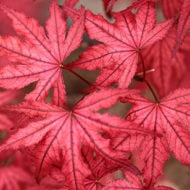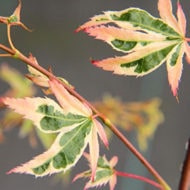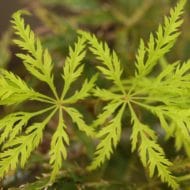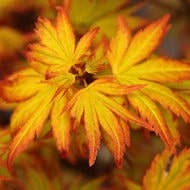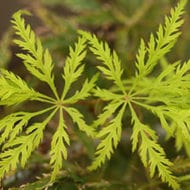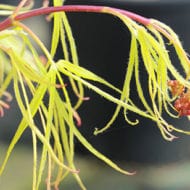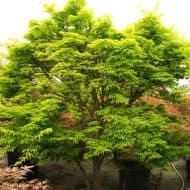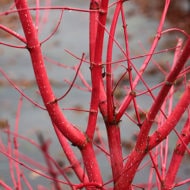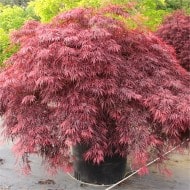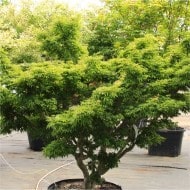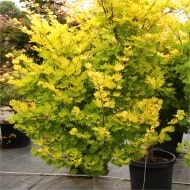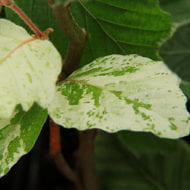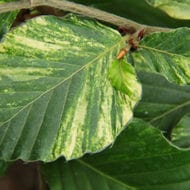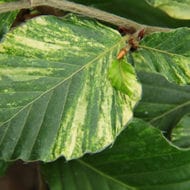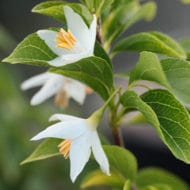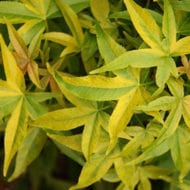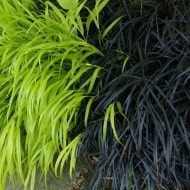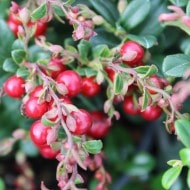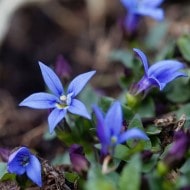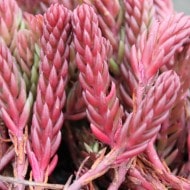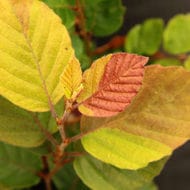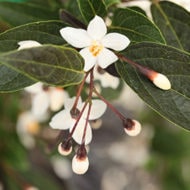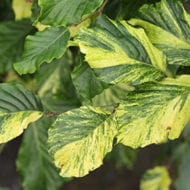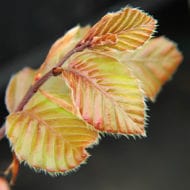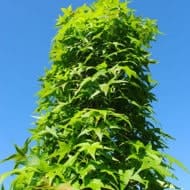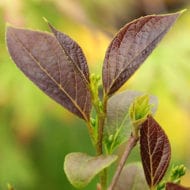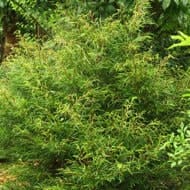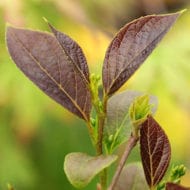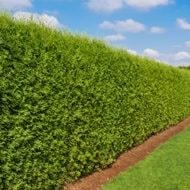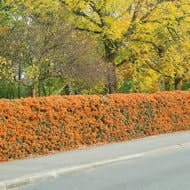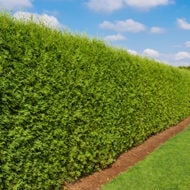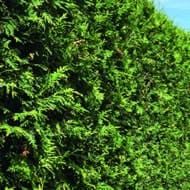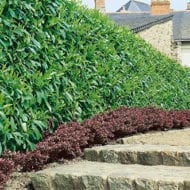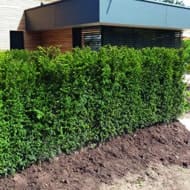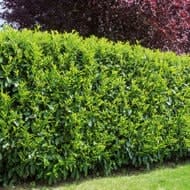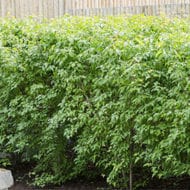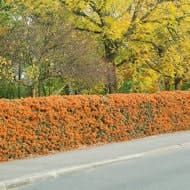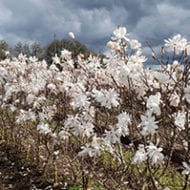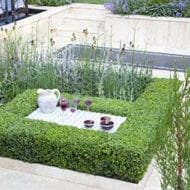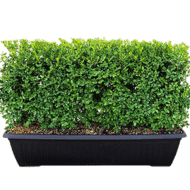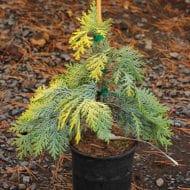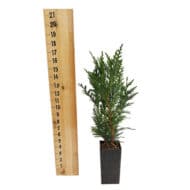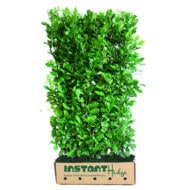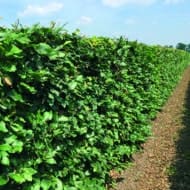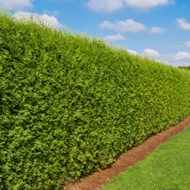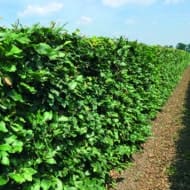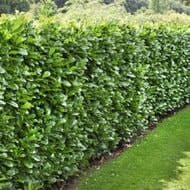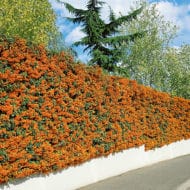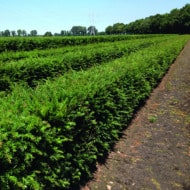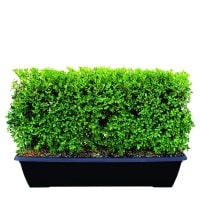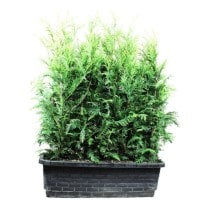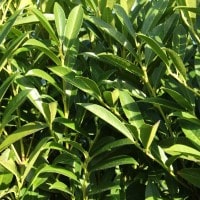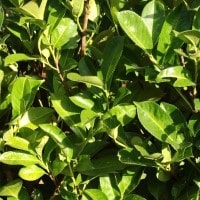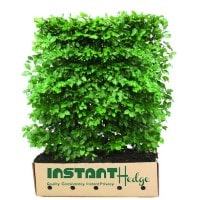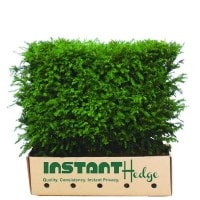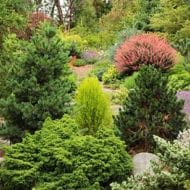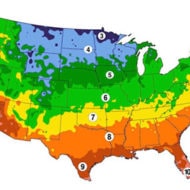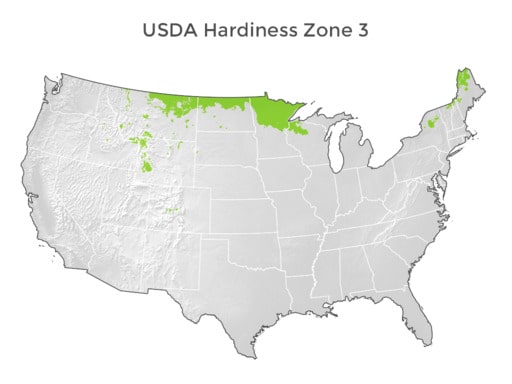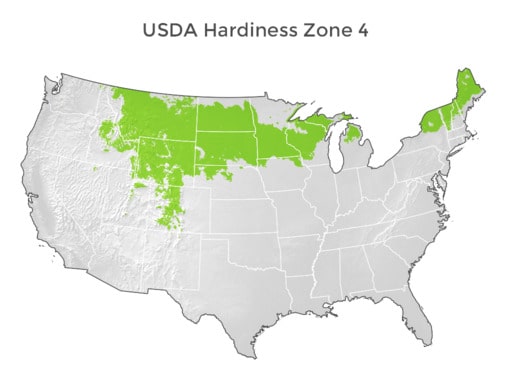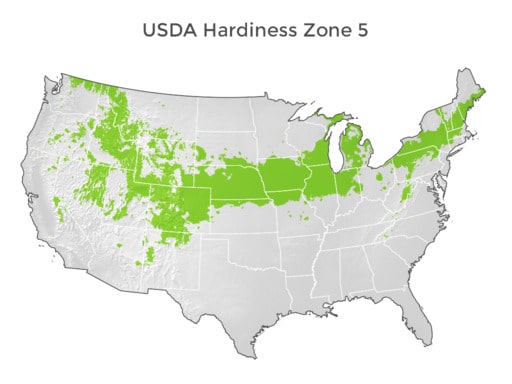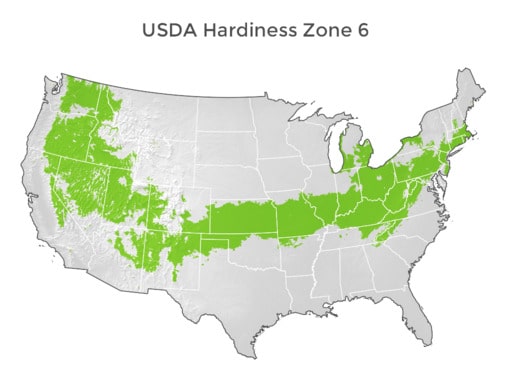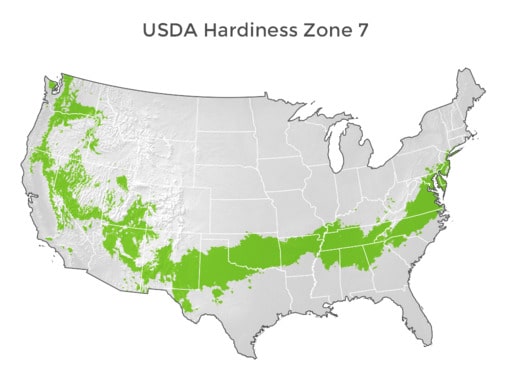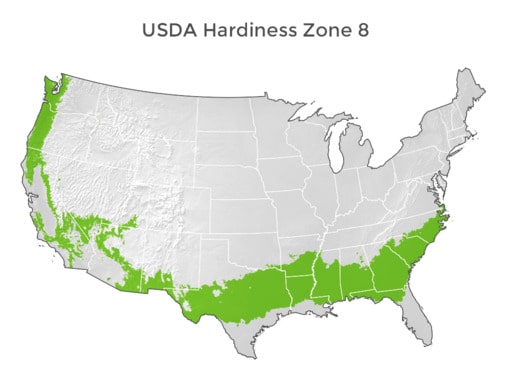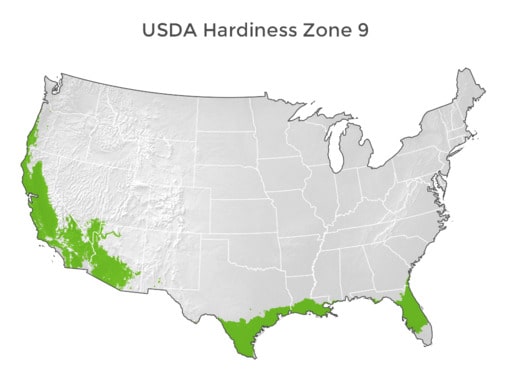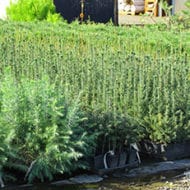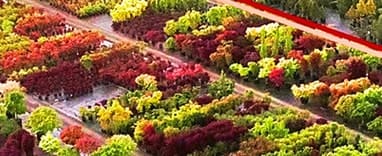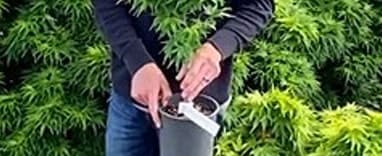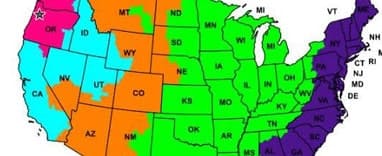A family of deer wandering through your property is picturesque, but when they stop and browse your prized plantings, it’s not a pretty sight. Through the spring and summer, deer can be selective and nip off the tender new growth of their favorite plants. But come winter, your conifers and other plantings are at risk of real damage by hungry deer, depending on the amount of snow there is. In winters with only a light snow cover, more foliage is available to them and they will eat the trees and shrubs that they find most palatable. In winters with a lot of snow, however, there is less foliage available to them, and they will browse whatever they can reach — even the less palatable conifers that they would normally avoid. They’re hungry, and unfortunately, any of your plantings can be decimated.
The best thing to do is to choose conifers that deer aren’t fond of. That way, your plantings will be safe most of the year. Luckily, there are species of conifers that have good to excellent deer resistance. Plants that have a strong fragrance, or those with fuzzy or stiff, prickly foliage are usually the ones they avoid. As a bonus, it’s possible to choose beautiful conifers that are partially shade tolerant in addition to being less attractive to deer. The ubiquitous Yew bushes and Arborvitae cultivars seen everywhere in landscapes are deer candy, especially in the winter, but there are excellent deer resistant evergreens that you can choose from. Here are some suggestions of conifer varieties that do well in sun to partial shade that are also deer resistant.
Abies nordmanniana ‘Golden Spreader’ (Golden Spreader Nordmann Fir) – This is a compact, slow-growing fir that is wider than it is tall. It has soft green foliage in the spring and summer that changes to yellow-gold in the winter. It is excellent for the shade and has good deer resistance.
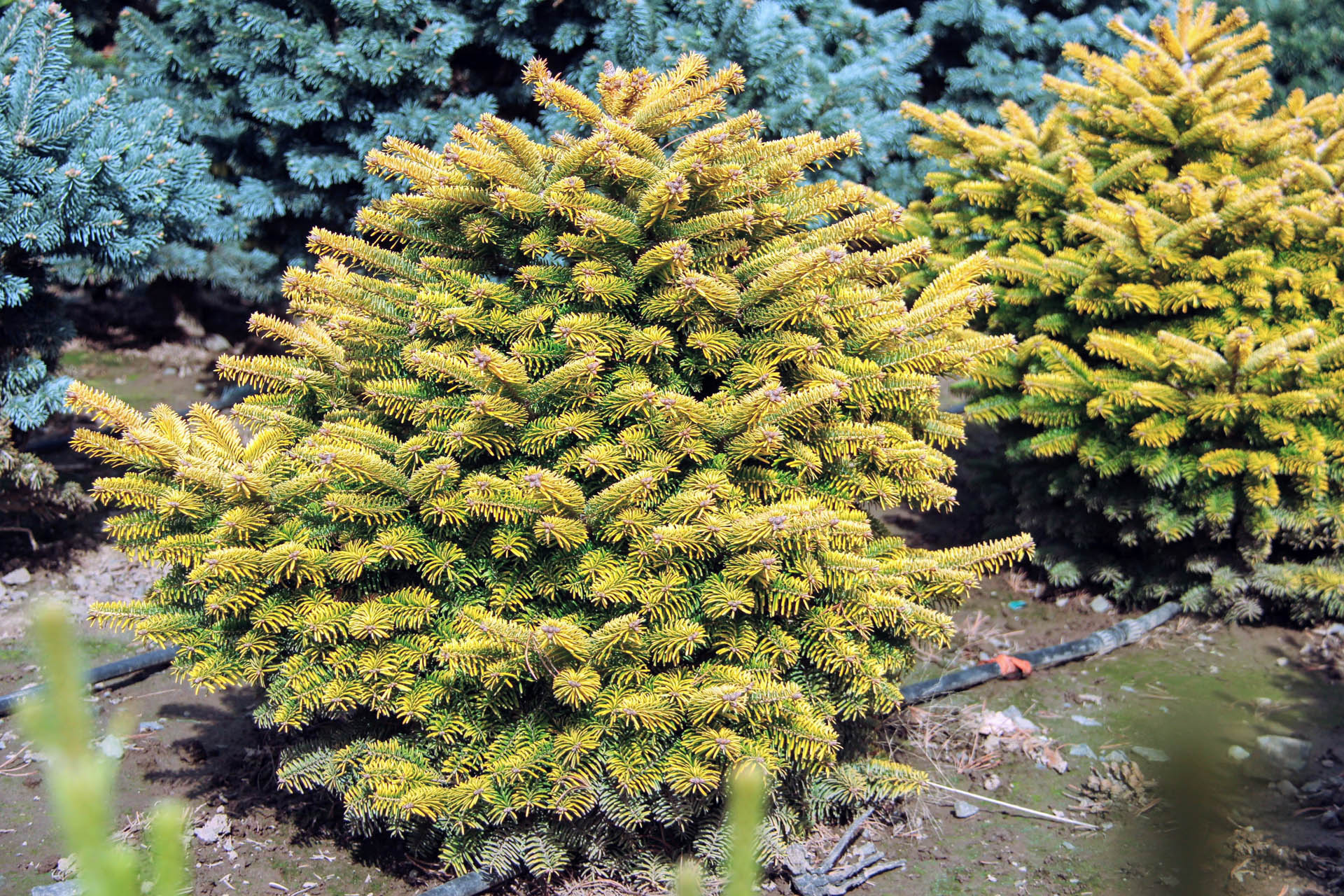
Araucaria araucana (Monkey Puzzle Tree) – This is a conifer for warmer climates, with short, pointed green leaves in whorls around the branches. Its tipped-up branching pattern gives it an unusual silhouette, making it a great accent tree. Monkey Puzzle has good deer resistance, and grows well in sun to partial shade.
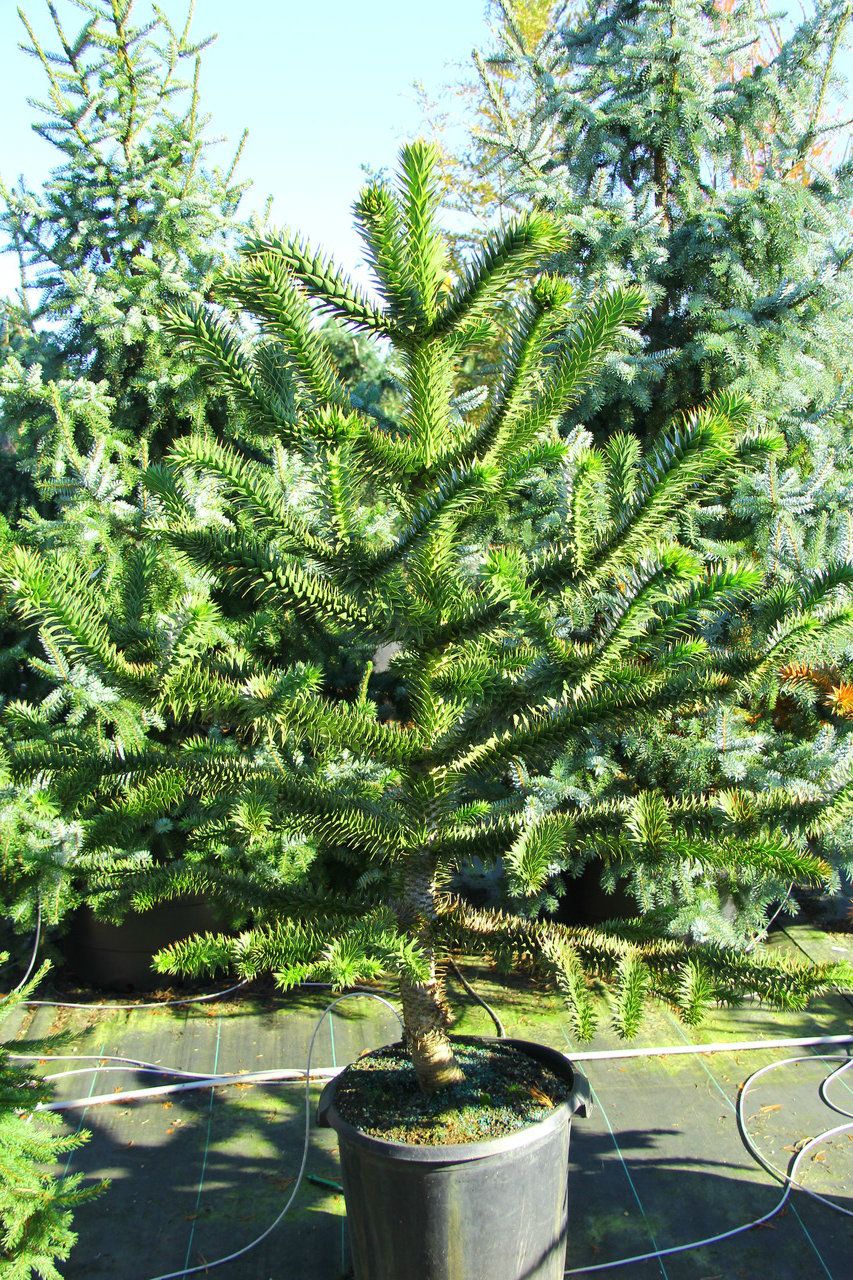
Cephalotaxus harringtonia ‘Korean Gold’ (Korean Gold Japanese Plum Yew) – Cephalotaxus has an upright habit and is an excellent alternative to Yew as a hedge and for privacy screening. Korean Gold is deer resistant, shade tolerant, and displays colorful golden needles on its branch tips.
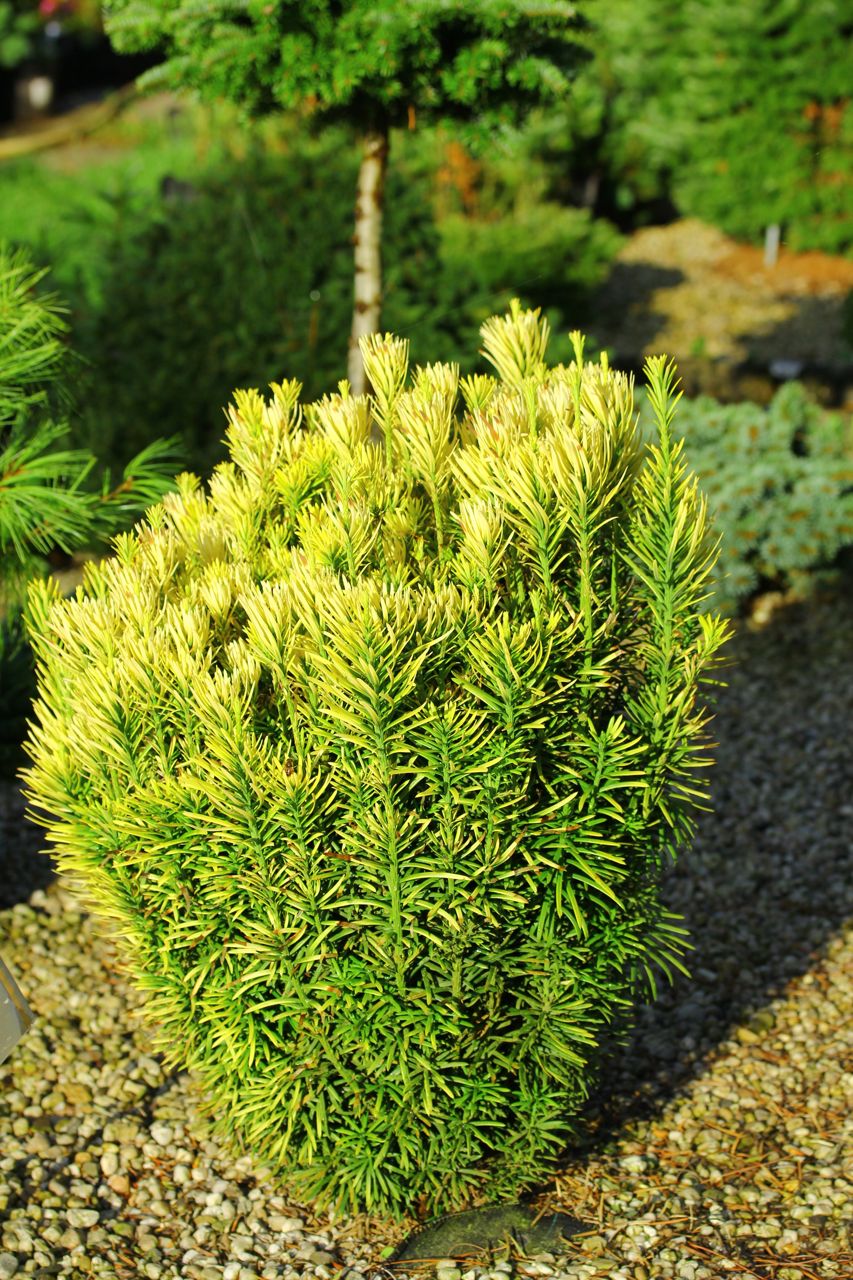
Cupressus nootkatensis ‘Glauca Pendula’ (Blue Weeping Alaskan Cypress) – This slender, graceful tree has blue-green, weeping branches with excellent deer resistance. It can grow in sun, partial shade, and full shade, and is stunning as a landscape specimen or in informal groupings.
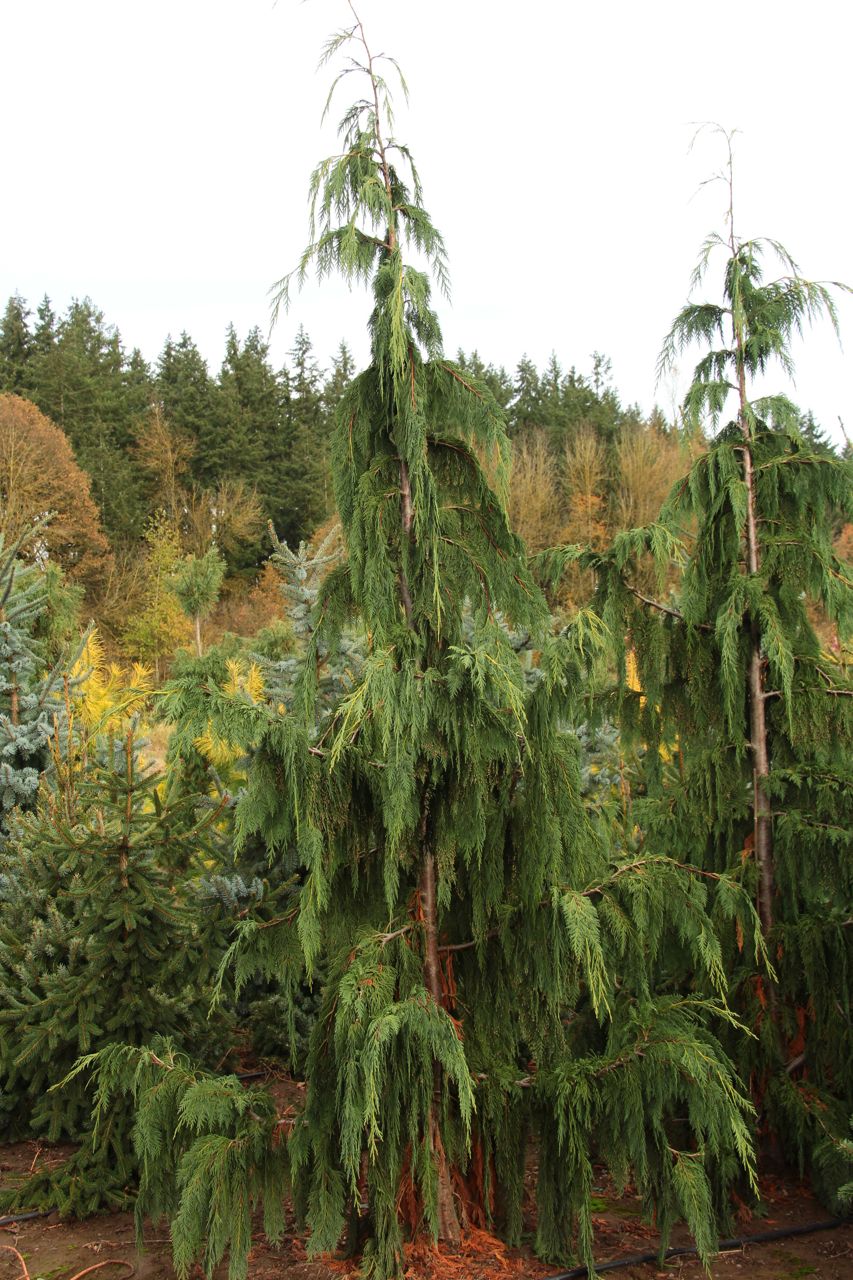
Cupressus nootkatensis ‘Sparkling Arrow’ – This is a slender, weeping tree with splashes of creamy white variegation, perfect for a narrow space. It is highly deer resistant and can grow well in sun, partial shade, and shade.
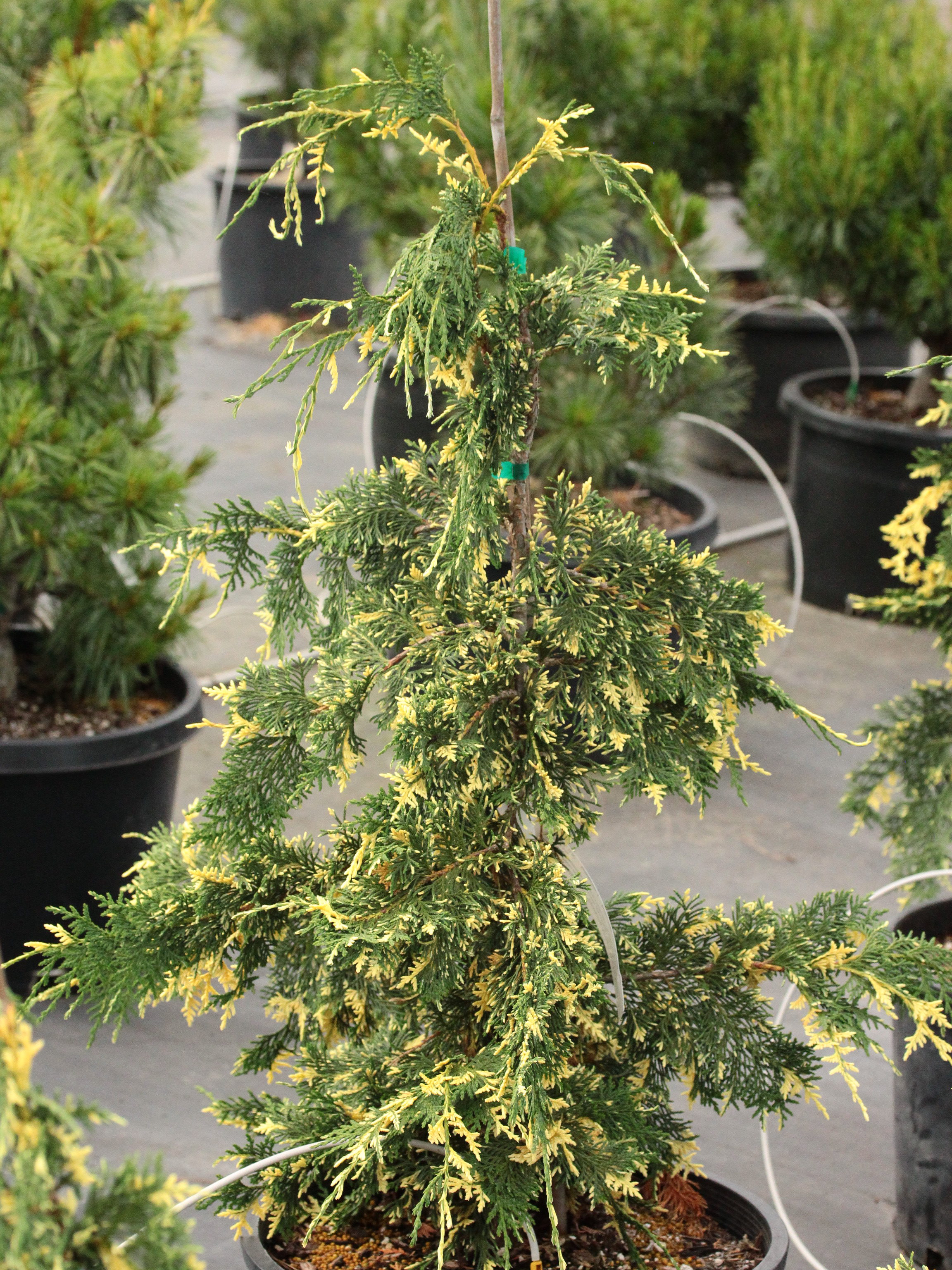
Juniperus virginiana ‘Taylor’ (Taylor Eastern Red-Cedar) – This is an upright, narrowly columnar Juniper, with emerald green foliage that is an excellent entrance tree down a driveway, or as a tall screen or windbreak. It is quite cold hardy, has good deer resistance, and does well in sun and partial shade.
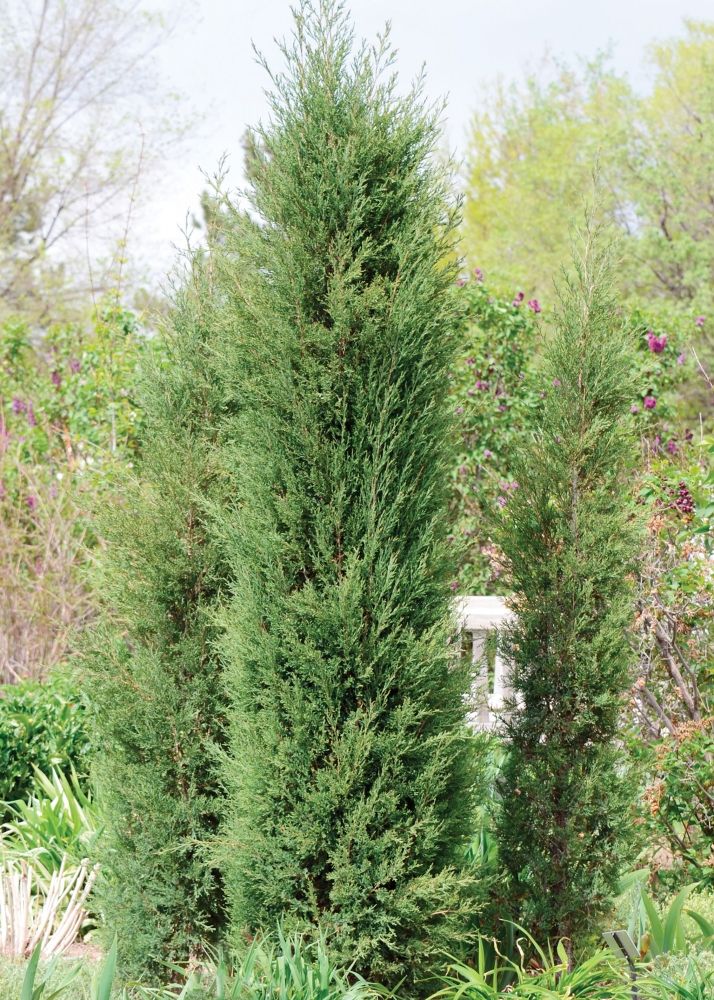
Juniperus scopulorum ‘Blue Arrow’ – This stunning, narrowly upright tree with blue-green foliage is an excellent cold weather alternative to the Italian Cypress. Similar to the Taylor Eastern Red-Cedar, it is effective as an entrance tree, screen or windbreak. It has good deer resistance and can grow in sun to partial sun.
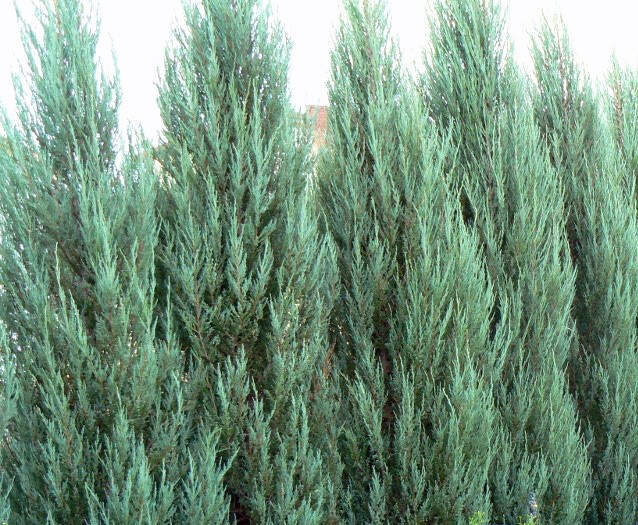
Picea orientalis ‘Skylands’ – Skylands is a colorful spruce with good deer resistance that does well in sun, partial shade, and shade. The exterior foliage is golden, contrasting with the dark green interior foliage. Red pollen cones and seed cones add additional spots of color to this beautiful tree.
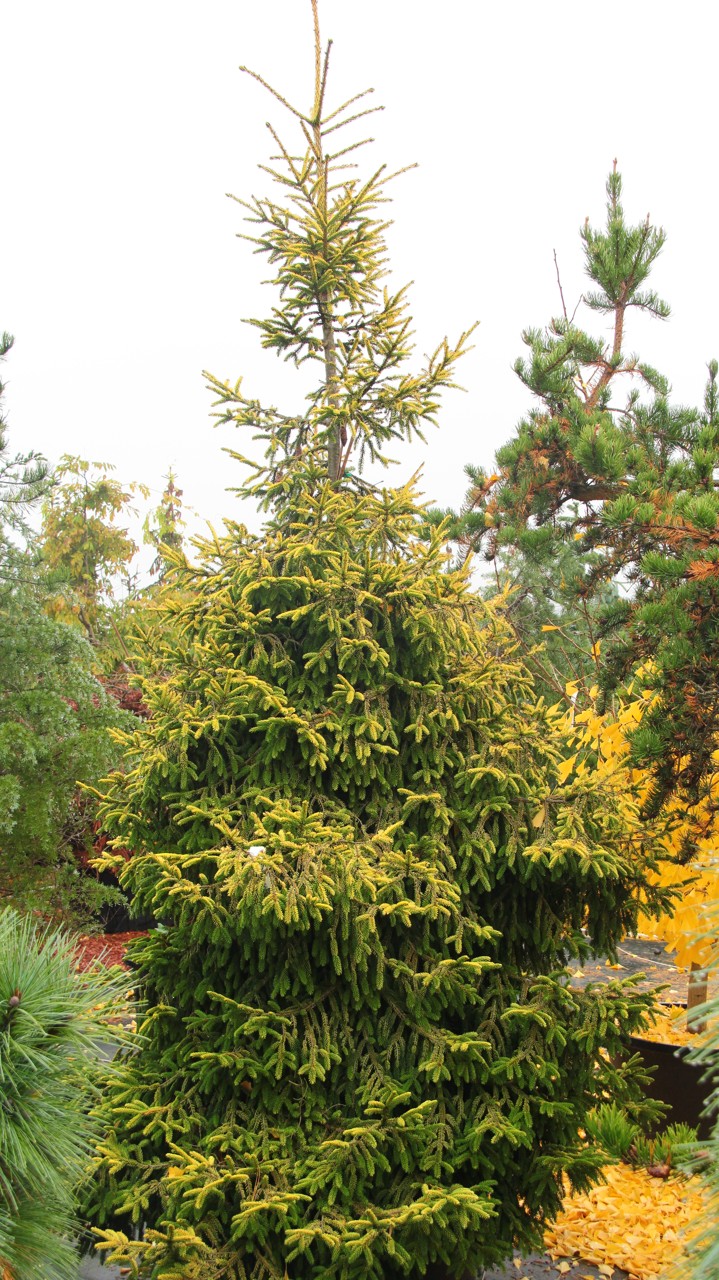
Picea orientalis ‘Silver Seedling’ – This dwarf spruce is excellent in shade and partial shade, and has good deer resistance. The upper surfaces of the branch tips are silver-white, making this a standout tree to brighten up a dark corner or as an understory evergreen.
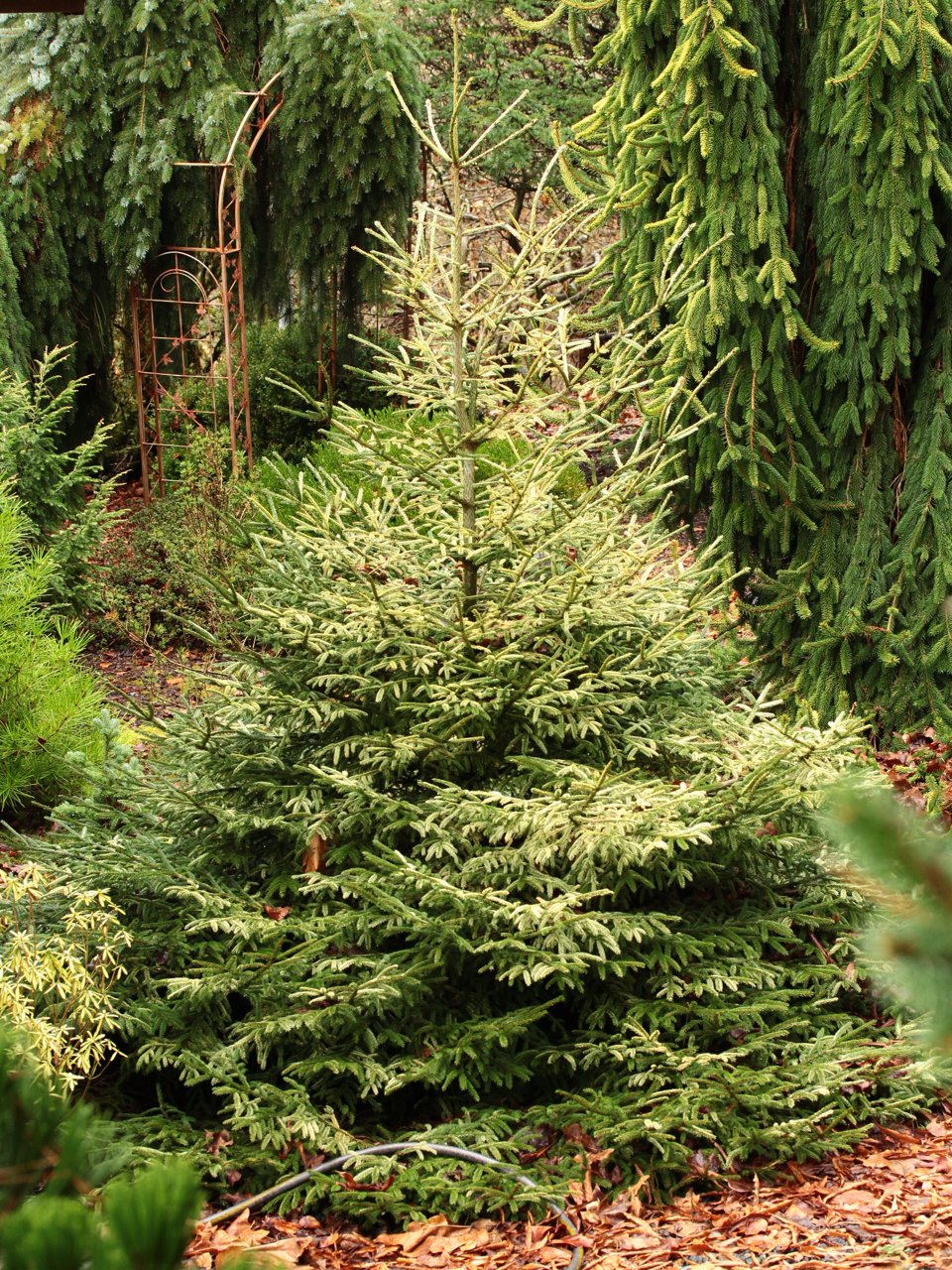
Pinus thunbergii ‘Thunderhead’ (Thunderhead Japanese Black Pine) – This is a dense, compact tree with dark green needles and silver candles on the end of each branch tip in the spring. It has excellent deer resistance, and can be grown in sun or partial shade.

Sciadopitys verticillata (Japanese Umbrella Pine) – This long-needled, soft, graceful tree makes an unusual addition as an accent, or for rock gardens and even bonsai. It is great for shade and partial shade, and has good deer resistance.
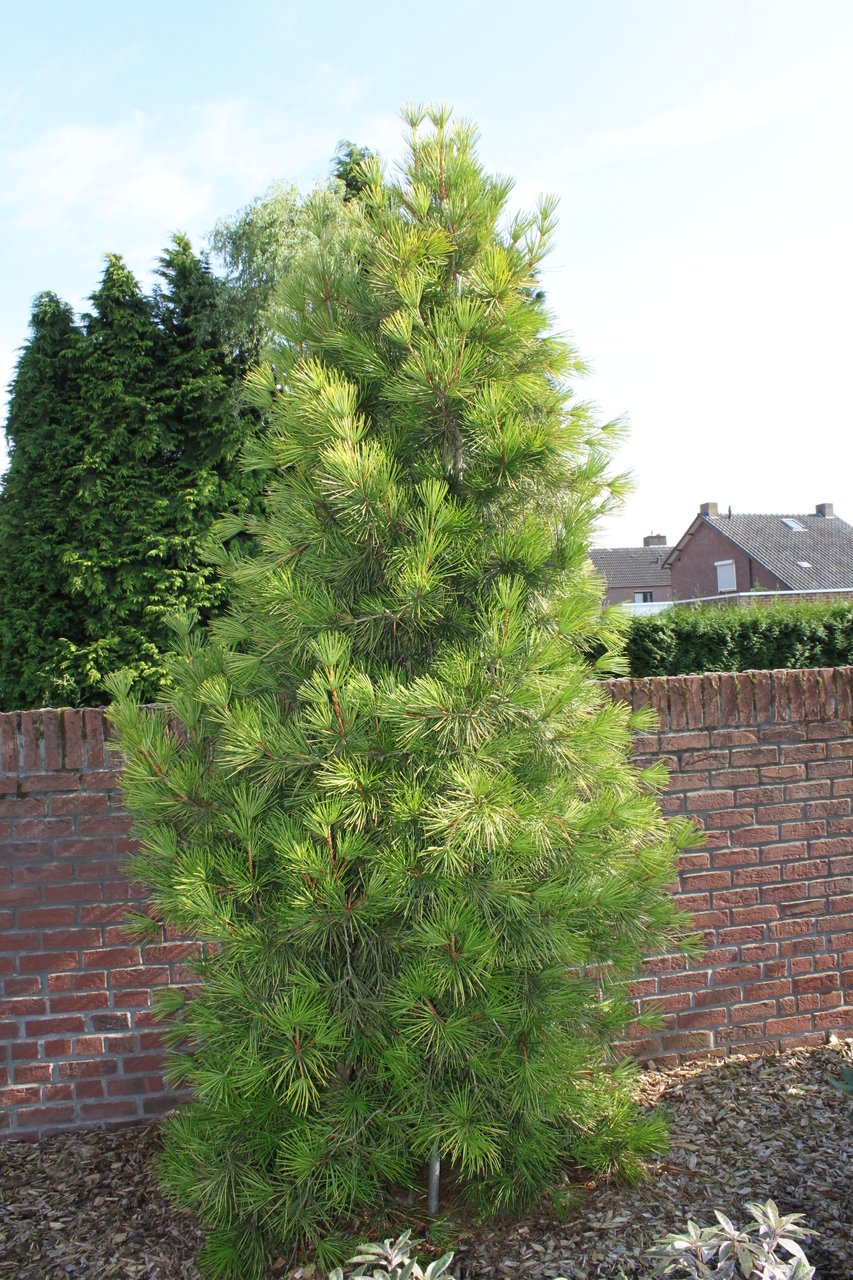
Thuja x ‘Green Giant’ (Green Giant Arborvitae) – Green Giant is a hybrid and a great alternative choice to the more abundant cultivars of Arborvitae used in landscaping. It has superior deer resistance and is more shade tolerant than the Emerald Green and DeGroots Spire varieties. Green Giant is vigorous, fast-growing, and makes an excellent screen, windbreak, or hedge.
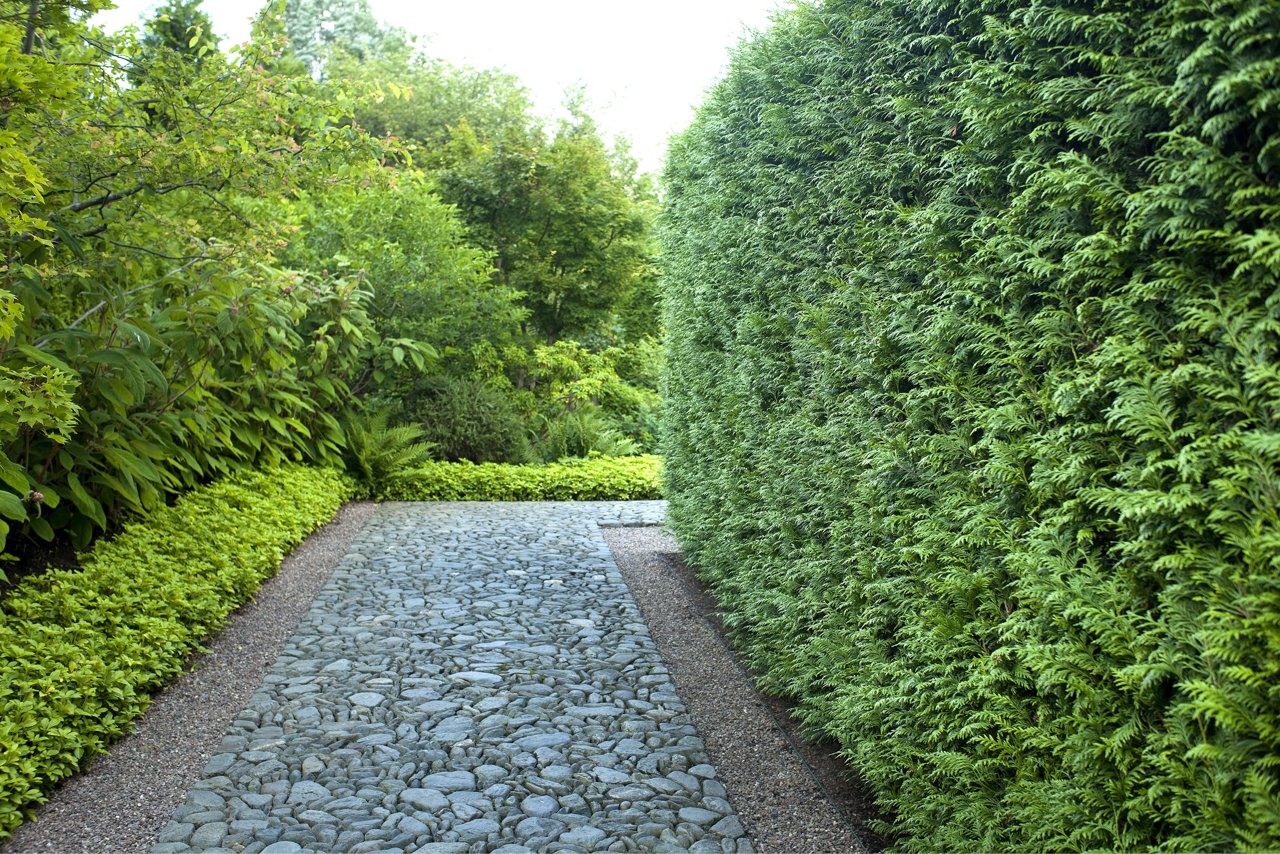
Here are a number of conifers according to deer resistance and shade tolerance.
| Latin Name | Common Name | Hardiness Zones | Deer Resistance | Sun | Part Shade | Shade |
|---|---|---|---|---|---|---|
| Cedrus deodara | Deodar Cedar | 7 to 9 | Excellent | X | X | No |
| Cryptomeria japonica | Japanese Cedar | 5 to 8 | Excellent | X | X | No |
| Cupressocyparis leylandii | Leyland Cypress | 6 to 10 | Excellent | X | X | No |
| Cupressus nootkatensis | Nootka Cypress | 4 to 8 | Excellent | X | X | X |
| Cupressus sempervirens | Italian Cypress | 7 to 10 | Excellent | X | No | No |
| Juniperus sabina | Savin Juniper | 3 to 7 | Excellent | X | No | No |
| Microbiota decussata | Siberian Cypress | 2 to 7 | Excellent | X | X | X |
| Pinus resinosa | Red Pine | 3 to 7 | Excellent | X | No | No |
| Pinus rigida | Pitch Pine | 4 to 7 | Excellent | X | No | No |
| Pinus thunbergii | Japanese Black Pine | 5 to 8 | Excellent | X | X | No |
| Sequoia sempervirens | Coast Redwood | 7 to 9 | Excellent | X | X | No |
| Sequoiadendron giganteum | Giant Sequoia | 6 to 8 | Excellent | X | X | No |
| Abies balsamea | Balsam Fir | 3 to 6 | Good | X | X | No |
| Abies koreana | Korean Fir | 5 to 7 | Good | X | X | No |
| Abies nordmanniana | Nordmann Fir | 4 to 6 | Good | X | X | No |
| Abies pinsapo | Spanish Fir | 6 to 7 | Good | X | X | No |
| Araucaria araucana | Monkey Puzzle Tree | 7 to 11 | Good | X | X | No |
| Cephalotaxus harringtonia | Japanese Plum Yew | 6 to 9 | Good | X | X | No |
| Chamaecyparis pisifera | Japanese False Cypress | 4 to 8 | Good | X | X | X |
| Cryptomeria japonica | Japanese Cedar | 5 to 9 | Good | X | X | No |
| Juniperus chinensis | Chinese Juniper | 4 to 9 | Good | X | No | No |
| Juniperus communis | Common Juniper | 2 to 8 | Good | X | No | No |
| Juniperus conferta | Shore Juniper | 6 to 9 | Good | X | No | No |
| Juniperus horizontalis | Creeping Juniper | 2 to 8 | Good | X | No | No |
| Juniperus procumbens | Japanese Garden Juniper | 4 to 9 | Good | X | No | No |
| Juniperus scopulorum | Mountain Juniper | 3 to 9 | Good | X | X | No |
| Juniperus squamata | Singleseed Juniper | 4 to 8 | Good | X | No | No |
| Juniperus virginiana | Eastern Red-Cedar | 2 to 9 | Good | X | X | No |
| Larix laricina | Tamarack | 2 to 5 | Good | X | No | No |
| Metasequoia glyptostroboides | Dawn Redwood | 5 to 8 | Good | X | X | No |
| Picea abies | Norway Spruce | 2 to 7 | Good | X | X | No |
| Picea glauca | White Spruce | 2 to 7 | Good | X | X | No |
| Picea omorika | Serbian Spruce | 4 to 7 | Good | X | X | No |
| Picea orientalis | Oriental Spruce | 4 to 7 | Good | X | X | X |
| Picea pungens | Colorado Blue Spruce | 2 to 7 | Good | X | No | No |
| Pinus banksiana | Jack Pine | 2 to 6 | Good | X | No | No |
| Pinus bungeana | Lacebark Pine | 4 to 8 | Good | X | X | No |
| Pinus cembra | Swiss Stone Pine, Arolla Pine | 3 to 7 | Good | X | X | No |
| Pinus densiflora | Japanese Red Pine | 4 to 7 | Good | X | X | No |
| Pinus heldreichii | Bosnian Pine | 4 to 8 | Good | X | No | No |
| Pinus mugo | Mugo Pine | 3 to 7 | Good | X | X | No |
| Pinus nigra | Austrian Pine | 4 to 7 | Good | X | No | No |
| Pinus parviflora | Japanese White Pine | 4 to 7 | Good | X | X | No |
| Pinus pumila | Dwarf Siberian Pine | 3 to 6 | Good | X | X | No |
| Pinus strobus | Eastern White Pine | 3 to 8 | Good | X | X | No |
| Pinus sylvestris | Scotch Pine | 3 to 7 | Good | X | No | No |
| Pinus virginiana | Virginia Pine | 4 to 8 | Good | X | X | No |
| Pinus wallichiana | Himalayan White Pine | 5 to 7 | Good | X | X | No |
| Podocarpus macrophyllus | Yew Plum Pine, Buddhist Pine | 7 to 11 | Good | X | X | No |
| Pseudotsuga menziesii | Douglas Fir | 4 to 6 | Good | X | No | No |
| Sciadopitys verticillata | Japanese Umbrella Pine | 5 to 8 | Good | X | X | X |
| Thujopsis dolobrata | Hiba Arborvitae | 5 to 7 | Good | X | X | No |
| Abies concolor | White Fir | 3 to 7 | Moderate | X | X | No |
| Abies fraseri | Fraser Fir | 4 to 7 | Moderate | X | No | No |
| Cedrus atlantica | Atlas Cedar | 6 to 9 | Moderate | X | X | No |
| Chamaecyparis obtusa | Hinoki Cypress | 5 to 8 | Moderate | X | X | X |
| Chamaecyparis thyoides | Atlantic White Cedar | 3 to 8 | Moderate | X | X | No |
| Larix decidua | European Larch | 3 to 6 | Moderate | X | No | No |
| Taxodium distichum | Bald Cypress | 4 to 10 | Moderate | X | X | No |
| Thuja plicata | Western Red-Cedar | 5 to 8 | Moderate | X | X | No |
| Tsuga canadensis | Canada Hemlock | 3 to 7 | Moderate | X | X | X |
| Tsuga caroliniana | Carolina Hemlock | 4 to 7 | Moderate | X | X | X |
| Taxus baccata | English Yew | 3 to 8 | Poor | X | X | X |
| Taxus brevifolia | Pacific Yew | 4 to 9 | Poor | X | X | X |
| Taxus cuspidata | Japanese Yew | 4 to 9 | Poor | X | X | X |
| Taxus × media | Anglojap Yew | 4 to 7 | Poor | X | X | X |
| Thuja occidentalis | American Arborvitae | 2 to 7 | Poor | X | X | No |
References for Deer Resistant Conifers
https://njaes.rutgers.edu/deer-resistant-plants/
https://extension.unh.edu/blog/which-evergreen-shrubs-privacy-are-deer-resistant
https://www.pennlive.com/gardening/2015/01/ any_good _evergreen_ trees_that.html
http://ceventura.ucanr.edu/Gardening/ Coastal /Landscape _578/Deer/
https://conifersociety.org/conifers/cupressus/
https://www.bbg.org/gardening/article/deer-resistant#:~:text=But it’s rare to find,plants that deer generally avoid.
https://greenarborists.com/five-deer-resistant-trees-for-southern-california-properties/
http://pcmg.ucanr.org/files/178838.pdf
https://ucanr.edu/sites/MG_of_CS/files/323397.pdf
https://wellesleyma.gov/DocumentCenter /View/ 6725/ Deer-Resistant-Native-Plants


